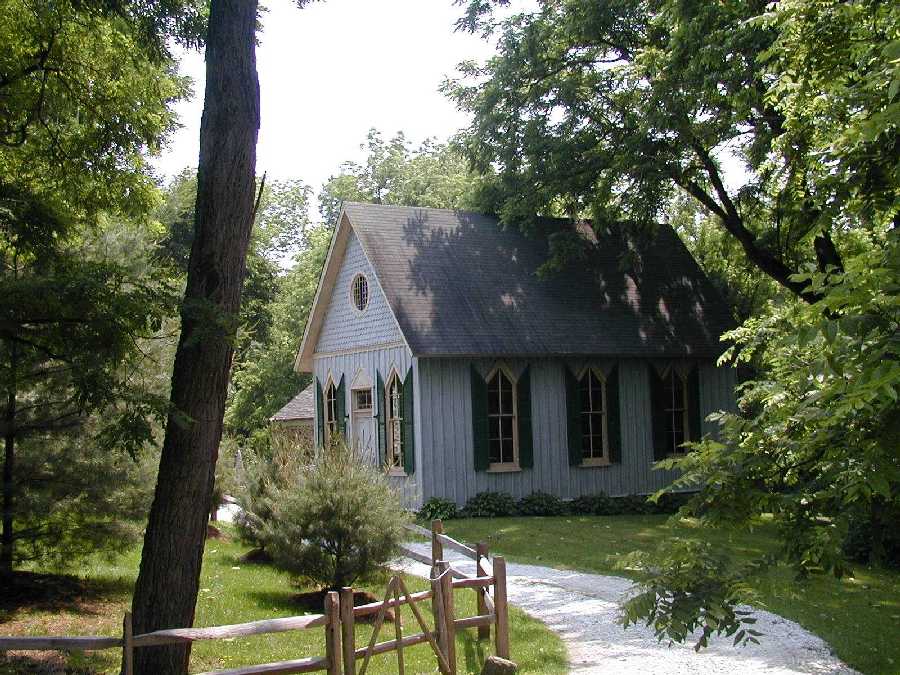
Photo credit:
Don Cook, 2002
|
St. John's Church, Ruxton
Inventory No.:
BA-1559
Date Listed:
3/15/1982
Location:
7538 Bellona Avenue (MD 134), Towson, Baltimore County
Category:
Building
Period/Date of Construction:
1886
Architect/Builder:
Builder: George Horn
|
|
Description:
St. John's Church, Ruxton, is a late-19th century frame Gothic Revival gable-roofed structure with board-and-batten siding, stylized lancet windows, and Queen Anne decorative detailing, including fishscale shingles in the gables. The building rests on a rubble stone foundation facing east and bears a cornerstone (southeast corner) inscribed "St. John's A.U.M.P. Church A.D. 1886". Interior features include narrow vertical board wainscoting; plastered walls and ceilings; turned balusters, newels, and columns at the altar; and oak pews. The property is enhanced by a 1 1/2-story stuccoed stone house, believed to date from about 1835, which is used as a parsonage, and a simple frame rectangular c. 1890s social hall. The parsonage has extensive fire damage to the interior, though the stone walls remain intact, and the social hall is in poor condition but does retain much of its original features.
|
Significance:
St. John's Church, Ruxton, and its accompanying buildings, the "parsonage" and the social hall, are significant for association with black religious and social history in the Bare Hills--Ruxton area of Baltimore County. These buildings were created as a center for the religious and social activities of a black congregation that was formed in the 1830s and acquired this site in 1833. Around the turn of the 20th century, members of the congregation, which was always small, worked primarily for the affluent white population whose estates and large houses bordered the complex. As a church built in a modest interpretation of the Gothic Revival style with Queen Anne influenced decorative detailing, St. John's Church is a small but refined example of church architecture of the late 19th century. These buildings characteristically were small scale frame structures with sharply pitched gable roofs, board-and-batten siding, lancet windows, and shingle decoration. St. John's Church is particularly important as an exceptional example of African American church building in the late 19th century.
|
|